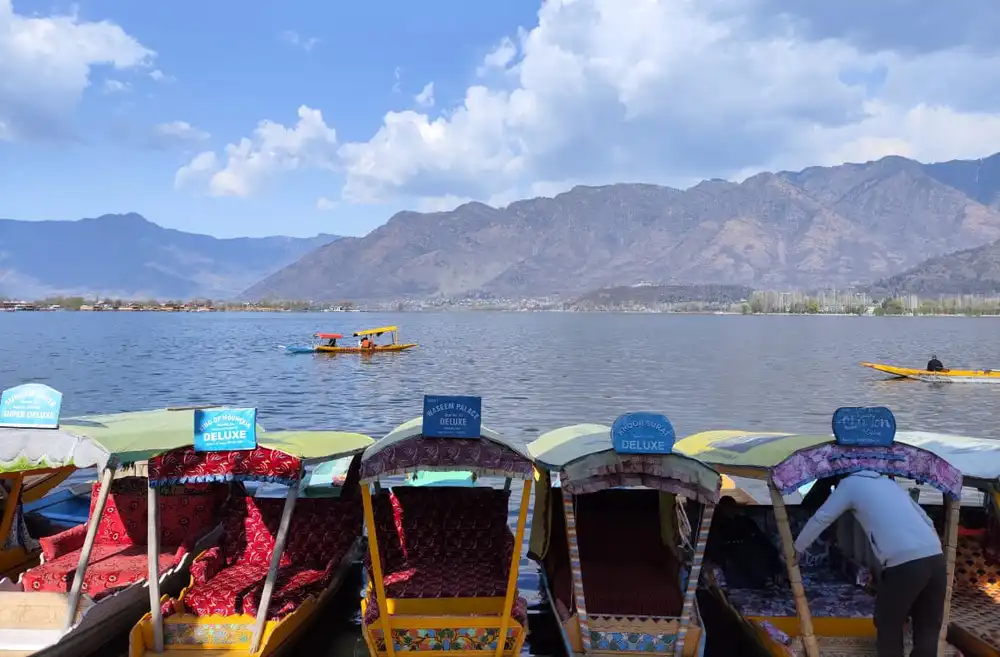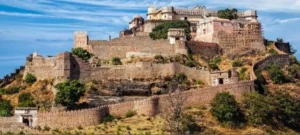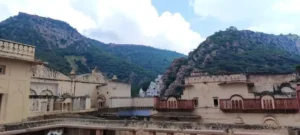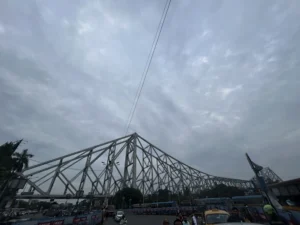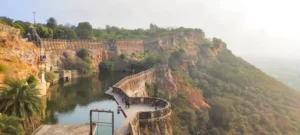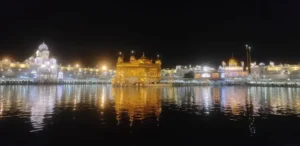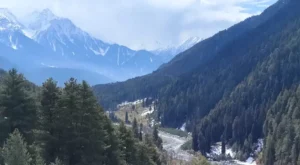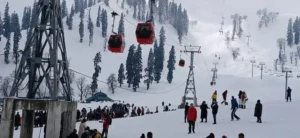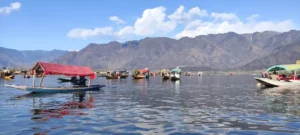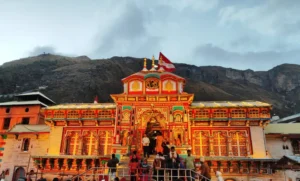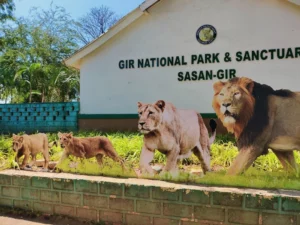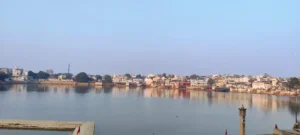Kashmir, known as “heaven on earth,” covers 225,000 square kilometers—making it bigger than 87 United Nations member countries. The region amazes visitors with its peaks that rise above 20,000 feet and peaceful valleys that rest at 5,300 feet above sea level.
A trip through Jammu and Kashmir takes you from warm subtropical lowlands to cool alpine highlands. Different ecosystems blend naturally here. You can capture the beauty of pristine Dal Lake in Srinagar and watch snow-capped mountains pierce the clouds. The evergreen forests are home to more than 700 bird species. This photo trip shows you the hidden corners and seasonal changes that make Kashmir’s natural beauty engage both travelers and photographers.
Seasonal Colors of Kashmir Valley
Kashmir’s valley changes with each season and creates a visual feast that captures photographers and travelers. The landscape transforms through unique color palettes that make every scene worth capturing.
Spring: Cherry blossoms and tulip gardens
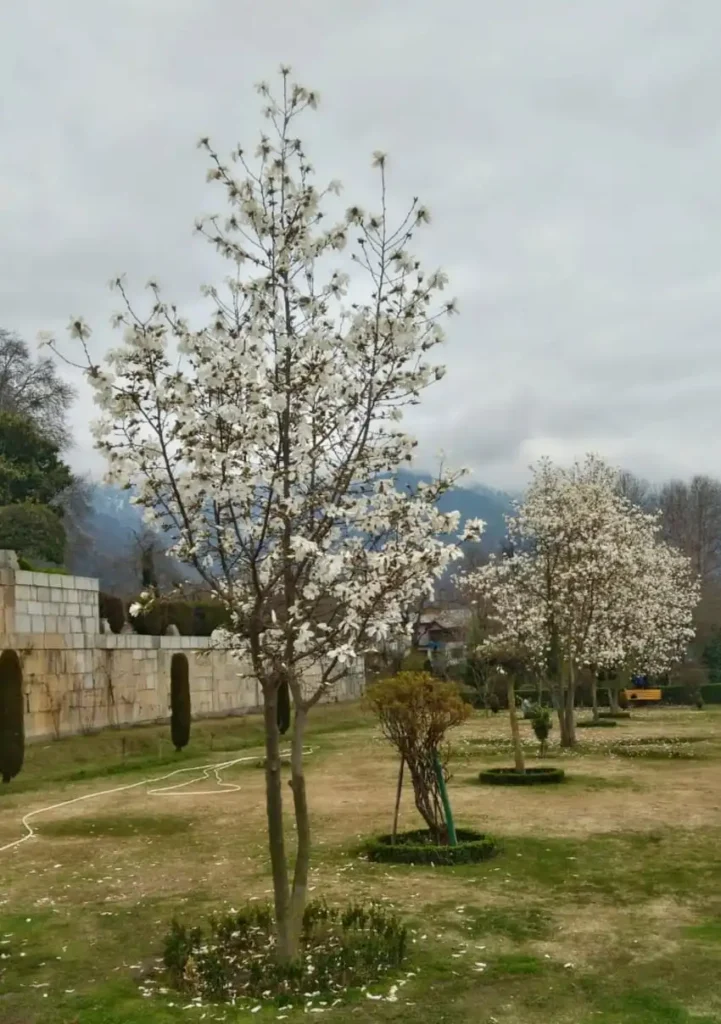
Kashmir comes alive as winter fades away with spectacular displays of almond and cherry blossoms. Delicate pink and white flowers fill the valley’s orchards during March and April. Srinagar’s Badamwari Garden becomes the heart of this floral show with its early-blooming almond trees. Asia’s largest tulip garden, the Indira Gandhi Tulip Garden, stretches across 74 acres at the Zabarwan range’s base. The garden showcases about 1.7 million tulip bulbs in various colors. Since its opening in 2007, the garden has housed 73 tulip varieties along with hyacinths, daffodils, and other Holland-imported flowers.
Summer: Lush meadows and flowing streams
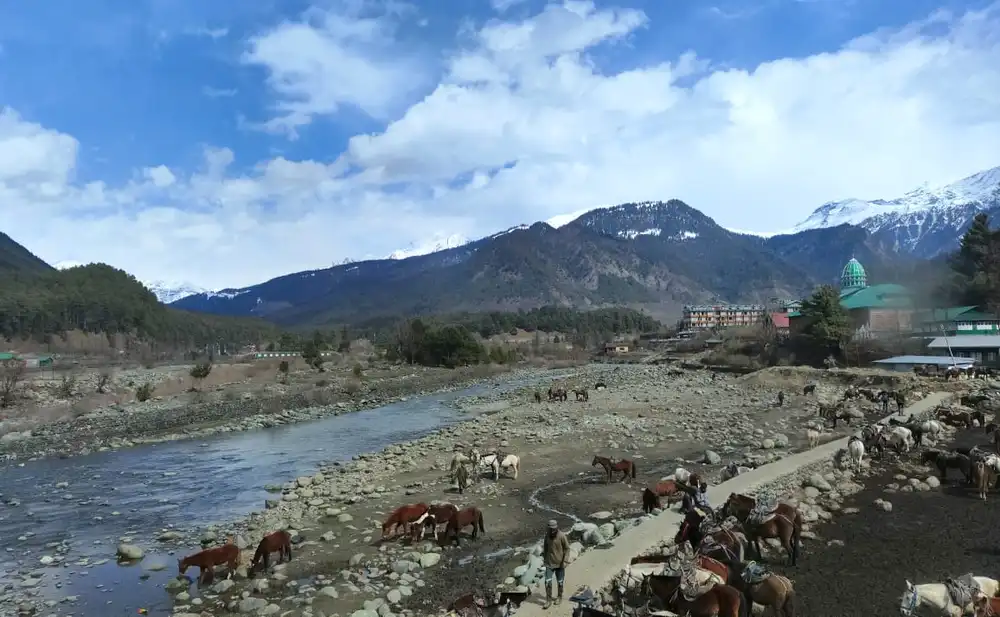
Pleasant temperatures between 15°C to 30°C make Kashmir perfect to explore from May to August. The meadows turn into green carpets during this time. Doodhpathri’s charming meadows feature the Shaliganga river flowing through milky white rock beds. Sonamarg shows off its emerald pastures with turquoise glacier-fed streams running through them. Srinagar’s famous Mughal Gardens burst with colorful flower displays. Adventure lovers can go trekking, hiking, and horseback riding in these green summer landscapes.
Autumn: Golden hues of chinar trees
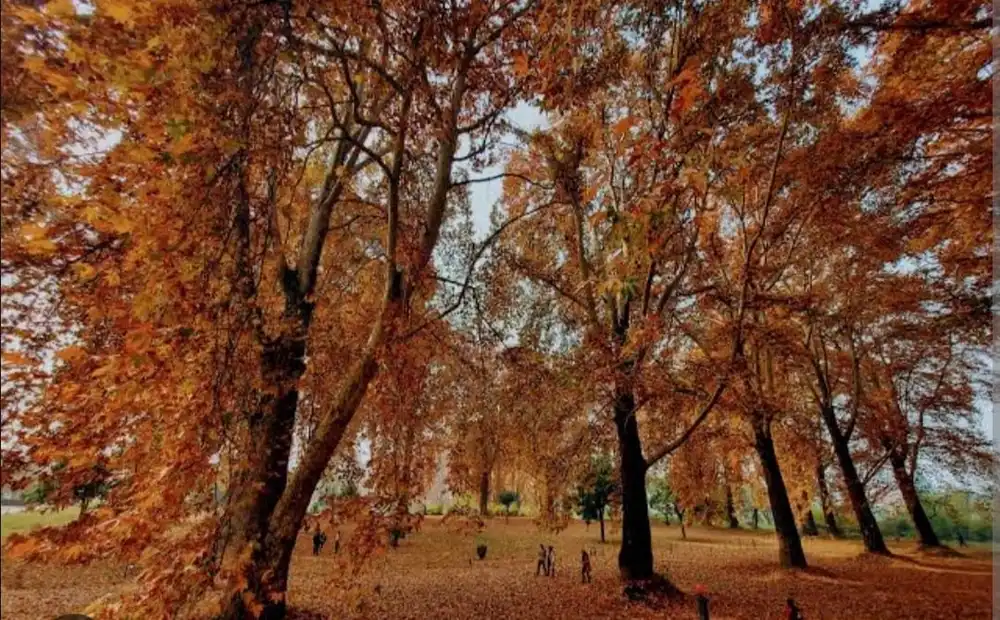
“Harud,” as locals call autumn, paints Kashmir in rich reds, oranges, and yellows. The valley’s iconic Chinar trees stand as autumn’s most striking feature. These trees, named from a Persian word meaning “What a Fire,” show impressive orange-red colors in fall. Their leaves range from blood red to mauve, amber, and yellow . Mughal gardens, especially Nishat and Shalimar, draw visitors to see the striking leaves of tall Chinar trees that add beauty to these magnificent spaces.
Winter: Snow-covered Kashmir and it’s frozen lakes
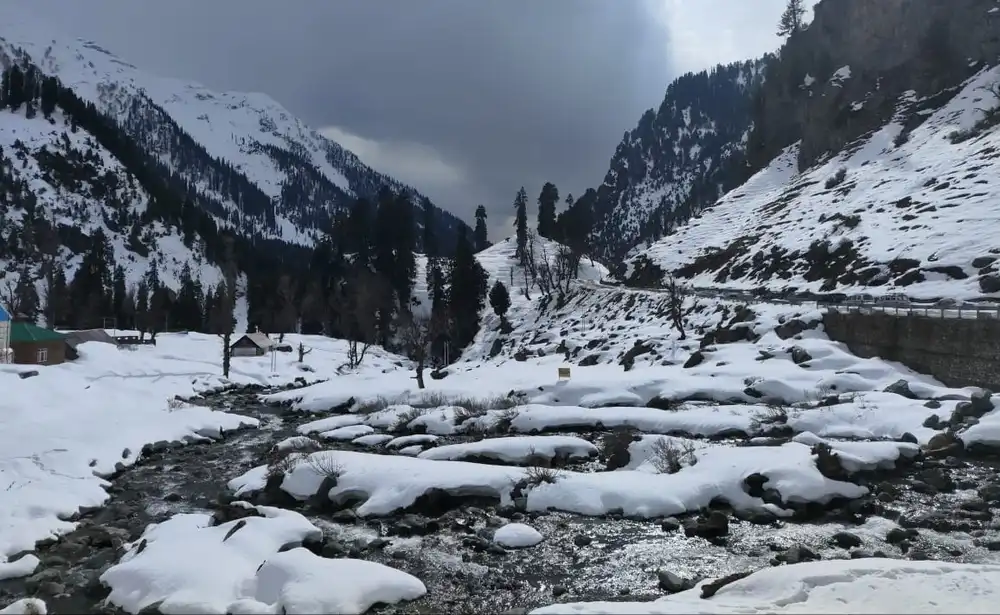
December and January bring temperatures below zero, turning Kashmir into a magical winter wonderland. Parts of Dal Lake freeze solid, creating amazing views as shikaras (boats) get stuck in ice when Srinagar’s temperature drops to minus 7.3 degrees Celsius. Snow-capped peaks, frozen waterfalls, and white valleys attract photographers and adventure enthusiasts. Gulmarg becomes India’s ski capital with its powder slopes and the world’s highest ski chair lift at 3979 meters. The snow train ride on the Banihal-Baramulla railway line lets visitors see Kashmir’s snow-covered landscape in a unique way.
Exploring the Diverse Landscapes of Kashmir
Jammu and Kashmir paints a stunning picture with its distinct regions. Your camera can capture everything from floating gardens to barren mountains. This photographer’s paradise spreads across terrains that will leave you spellbound.
The floating gardens of Dal Lake
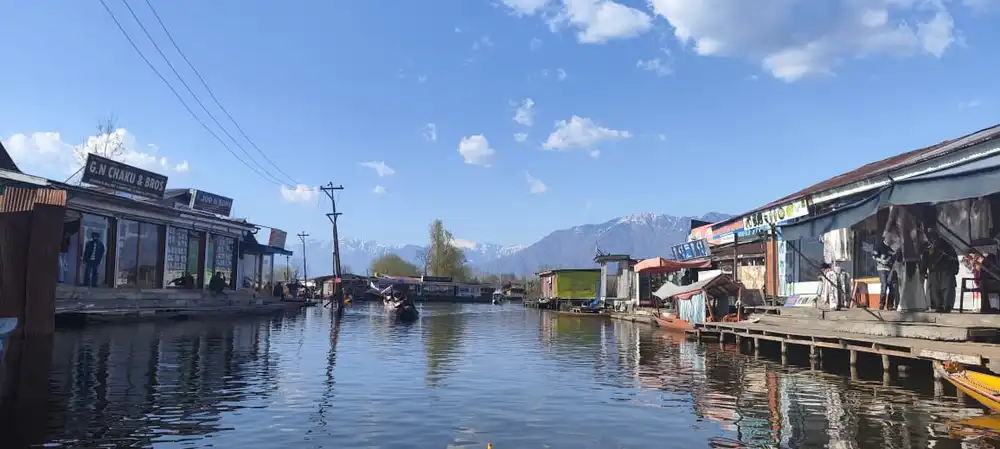
Dal Lake’s remarkable floating gardens or “Rad” showcase an agricultural wonder that dates back centuries. Local farmers create these gardens by weaving two aquatic weeds—pech (Typha angustata) and nargasa (Phragmites australis) into floating mats. These plots take three years to mature and reach about 2 meters thick, 3 meters wide, and 45 meters long. A newer study published shows these gardens spread across 7.5 km² of the lake. The gardens produce various vegetables like cauliflower, carrots, tomatoes, cucumbers, and the region’s famous nadru (lotus stems). Your best shots will come between April and October when the gardens burst with lush vegetation.
Mughal Gardens of Kashmir

Terraced lawns, cascading fountains, and vibrant flowerbeds define the Mughal Gardens of Srinagar. Built by Mughal emperors, these gardens—Shalimar Bagh, Nishat Bagh, and Chashme Shahi—reflect Persian-influenced grandeur. Overlooking the tranquil Dal Lake, their symmetrical layouts and flowing water channels create a serene retreat. Fragrant roses, tulips, and Chinar trees paint the landscape in seasonal hues, while the distant Zabarwan hills add to their timeless charm. A fusion of art and nature, the Mughal Gardens remain a poetic legacy of Kashmir’s royal past.
Soaring Above the Clouds: Enjoy Gulmarg gondola
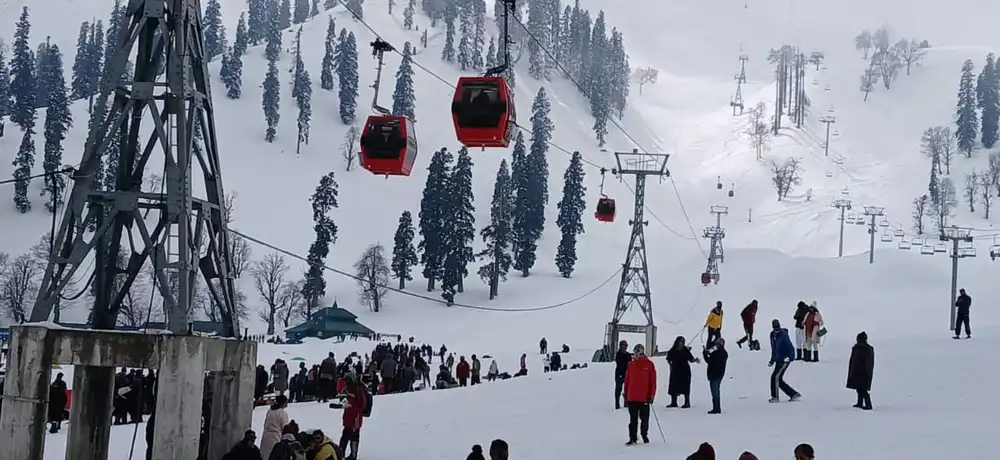
Gulmarg lives up to its name “Meadow of Flowers” with dramatic seasonal changes. Summer brings emerald meadows dotted with wildflowers in violet, yellow, and red hues. The alpine meadows of Gulmarg roll out like a lush green canvas beneath the towering Himalayan ranges. In the warmer months, vibrant wildflowers burst into bloom, transforming the landscape into a breathtaking spectacle. Locals lead their horses across the soft, grassy slopes, while visitors stroll through the open fields, taking in the crisp mountain air. Sparkling streams cut through the meadows, adding to the charm of the scenery. Adventurers and nature lovers explore Gulmarg’s vast stretches, fully immersed in the serene beauty that the valley effortlessly showcases.
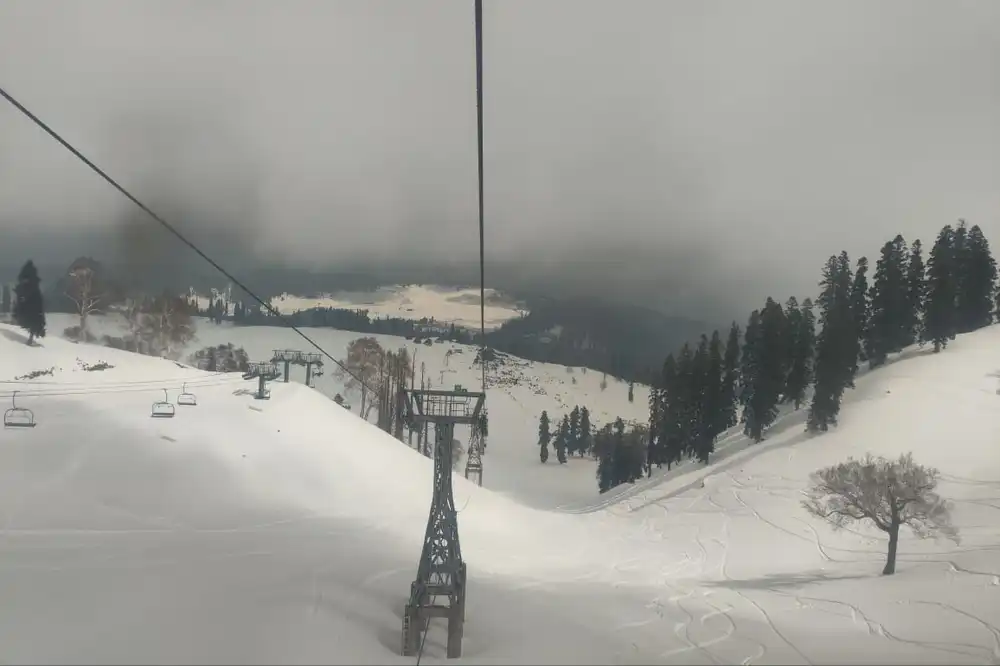
Alpine meadows of Sonmarg
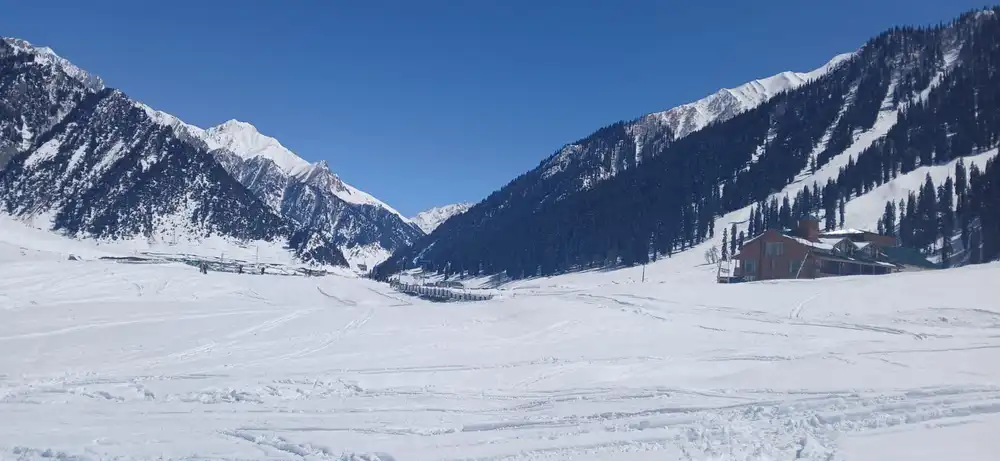
Sonamarg, “The Golden Meadows,” switches between snow-blanketed fields in winter and rich green pastures in summer. Red horses against green backdrops and misty mountains create perfect photo opportunities. The alpine meadows of Sonmarg spread out like a vibrant green carpet against the backdrop of snow-capped peaks. During spring and summer, wildflowers bloom in a riot of colors, painting the landscape with vivid hues. Shepherds guide their flocks across the gentle slopes, while crystal-clear streams weave through the valleys. The cool mountain breeze carries the sweet scent of fresh grass and flowers, making every moment in Sonmarg feel alive and refreshing. Adventure seekers trek through these meadows, soaking in the raw, untouched beauty that Sonmarg proudly offers.
Rugged terrains of Ladakh
Ladakh’s stark beauty lies beyond Kashmir Valley, nestled between Karakoram and Zanskar mountains. This high-altitude desert earned its nickname “the bridge between sky and earth” thanks to its barren mountains. The mountains create magical reflections on Pangong Tso lake, while Thikse Monastery sits proudly at 3,600 meters on a hillside. Clear skies bring sub-zero temperatures, yet Ladakh’s unique landscape offers amazing photo opportunities throughout the year.
Lush valleys of Pahalgam
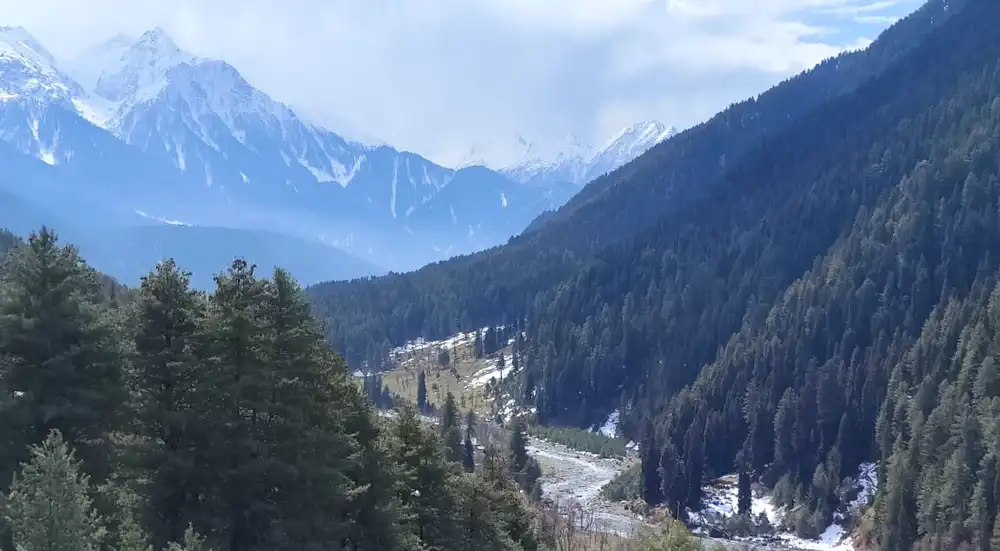
Thick pine forests and majestic Himalayan peaks define Pahalgam’s beauty. The Lidder River winds through the town, adding to its charm. Just 15 km away, Betaab Valley showcases sprawling green meadows surrounded by mountains. Baisaran Valley earned its nickname “Mini Switzerland” thanks to its dark meadows that mirror Swiss landscapes. Aru Valley’s green grasslands and breathtaking Himalayan views make it a photographer’s dream spot.
Meadows of Doodhpatri:
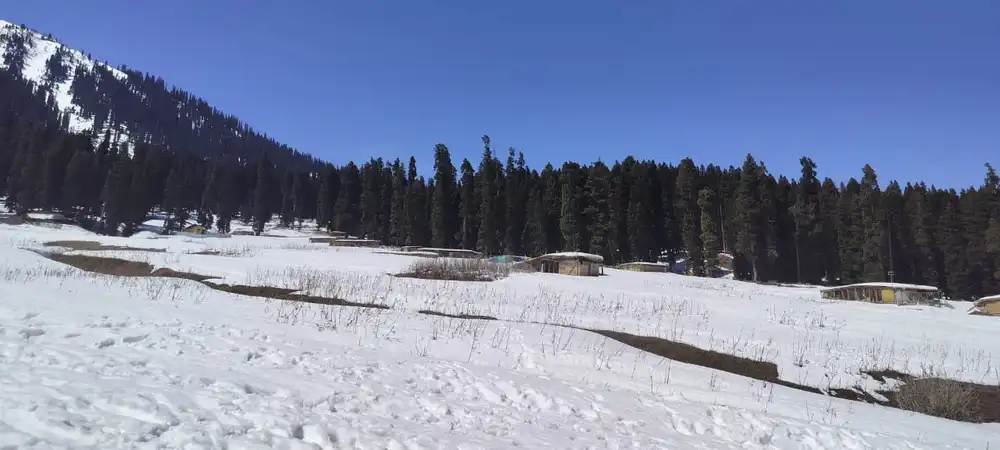
Verdant meadows and rolling hills define Doodhpathri’s charm. Nestled in the Pir Panjal range, this pristine valley is adorned with lush grasslands and dotted with pine trees. The Shaliganga River flows through, its milky-white waters giving the valley its name. In spring and summer, the landscape transforms into a vibrant carpet of wildflowers, while the distant snow-capped peaks add to its breathtaking beauty. A serene retreat away from the crowds, Doodhpathri offers nature lovers a perfect escape into Kashmir’s untouched wilderness.
Hidden Gems of Kashmir beyond Tourist Hotspots
Kashmir’s lesser-known paths hide gems that mass tourism hasn’t discovered yet. These quiet corners let photographers capture pure landscapes and cultural moments away from the tourist crowds at popular spots.
Ancient Martand Sun Temple
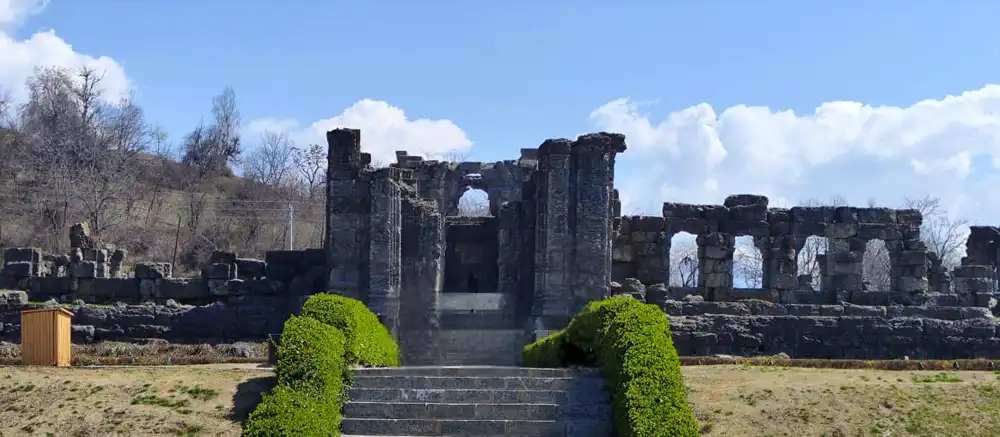
Perched atop a plateau, the ancient Martand Sun Temple stands as a testament to Kashmir’s grand architectural heritage. Built in the 8th century by Lalitaditya Muktapida, its towering limestone ruins overlook the sweeping plains of Anantnag. The temple’s intricate carvings and colonnaded courtyard reflect a blend of Gandhara, Gupta, and Kashmiri styles. Once dedicated to the Sun God, its remnants whisper tales of a glorious past. Surrounded by the mighty Himalayas, the site offers a panoramic view of the valley, making it a mesmerizing fusion of history and nature.
Verinag: The Timeless Spring Where the Jhelum is Born
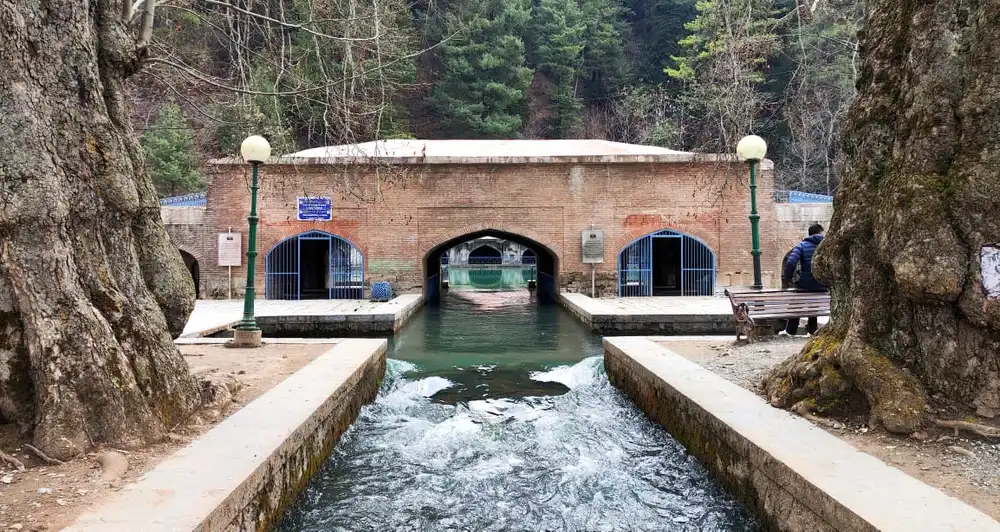
Tucked at the foothills of the Pir Panjal range, Verinag marks the serene origin of the Jhelum River. Its iconic octagonal stone spring, built by Mughal Emperor Jahangir, is framed by arched colonnades and lush gardens. The crystal-clear waters reflect the surrounding Chinar trees, creating a tranquil retreat steeped in history. As one of the Mughal-era marvels, Verinag blends architectural elegance with natural splendor. The nearby forests and misty hills enhance its charm, making it a perfect escape into Kashmir’s timeless beauty.
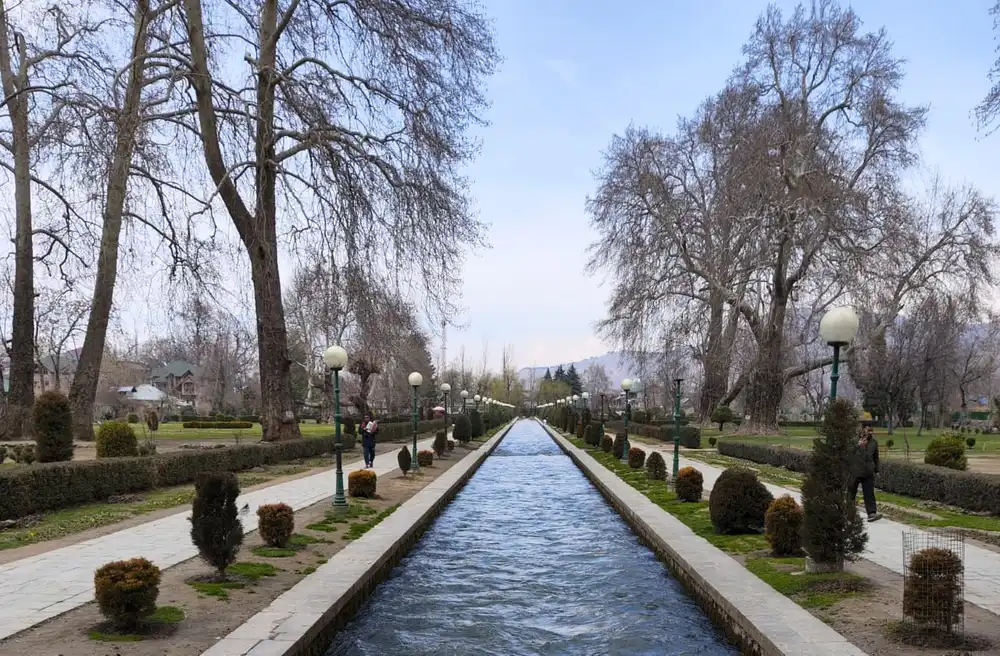
Frozen Drung waterfall
Nestled in the mountains of Tangmarg, Drung Waterfall cascades down rugged cliffs, freezing into a breathtaking spectacle in winter. Surrounded by dense pine forests and snow-laden peaks, the waterfall’s gushing streams create a soothing symphony year-round. In summer, its clear waters flow over moss-covered rocks, while in winter, massive icicles transform it into a surreal frozen wonder. Located near Gulmarg, this hidden gem captivates nature lovers and photographers alike, offering a serene escape into Kashmir’s untouched wilderness.
Best Time to Visit Kashmir for Photography
A photographer’s success in capturing Kashmir’s magnificent vistas depends on perfect timing. This picturesque region reveals different photographic possibilities throughout the year that shape your lens’s perspective.
Weather conditions across seasons in Kashmir
Kashmir welcomes photographers year-round with unique shooting conditions in every season. The spring months from March to May paint the landscape with vibrant tulips and cherry blossoms that create stunning compositions against mountain backdrops. April stands out as the prime time to shoot floral scenes at the Indira Gandhi Memorial Tulip Garden, where thousands of tulips bloom.
Summer days between June and August bring pleasant temperatures of 15°C to 30°C. Clear skies and warm light make this season ideal for landscape shots. The region turns into a golden wonderland during autumn from September to November. Chinar trees burst into fiery red and orange hues that photographers call “a painter’s dream” against the natural backdrop.
Snow blankets the region from December to February, creating dramatic winter scenes with temperatures below freezing. The frozen Dal Lake and snow-covered landscapes become perfect subjects for minimalist compositions.
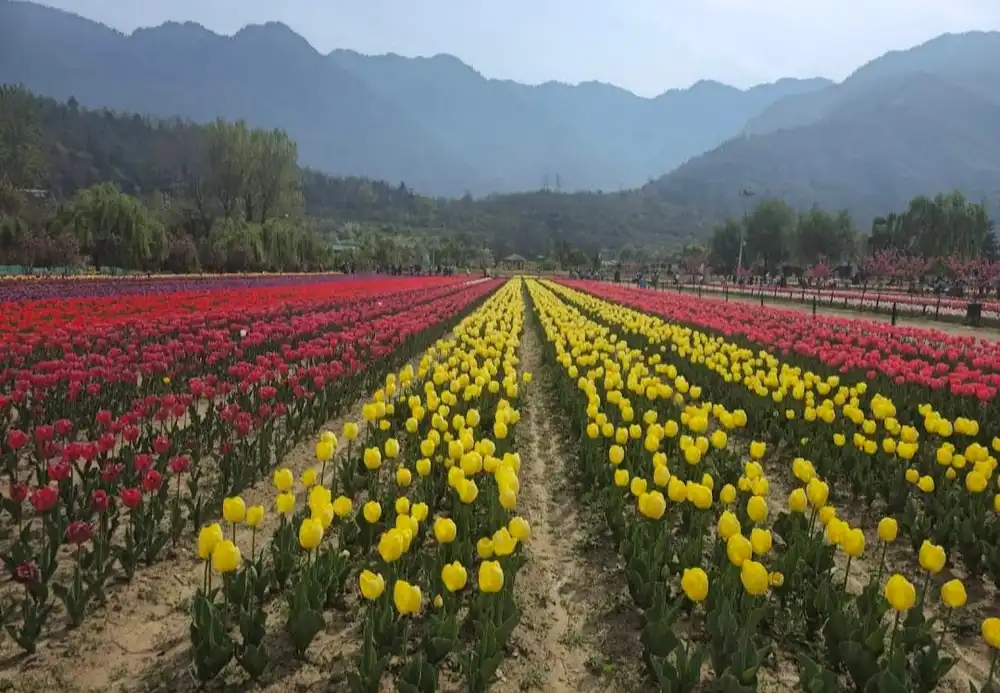
Festival calendar for cultural photography
Kashmir’s festivals showcase its rich cultural heritage. April brings the Tulip Festival with its blend of flowers, cultural performances, and handicraft displays. The Hemis Festival features monks in colorful attires performing traditional “Chaam” dance. The waterways come alive during the Shikara Festival in July-August as decorated boats race through the waters.
The Saffron Festival highlights autumn’s harvest season with traditional tea ceremonies using local saffron. Photographers can capture authentic handicrafts, local cuisines, and cultural performances against stunning Himalayan backdrops at the Gurez Festival.
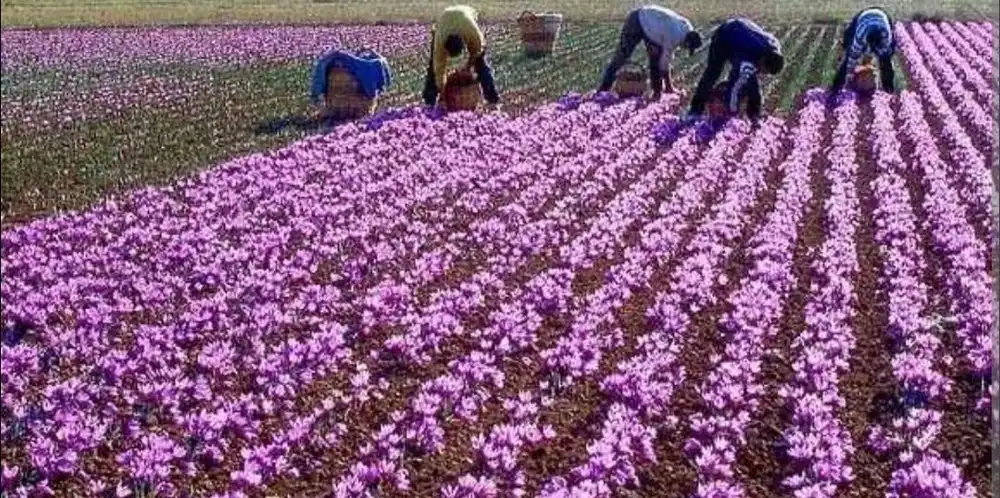
Avoiding crowds while capturing iconic locations in Kashmir
The best shots of popular sites come during early morning golden hours before 8 AM or after 4 PM. These times provide soft, flattering light that enhances landscape photography. The shoulder seasons in late March/early April or October/November let you explore iconic spots with smaller crowds.
Conclusion
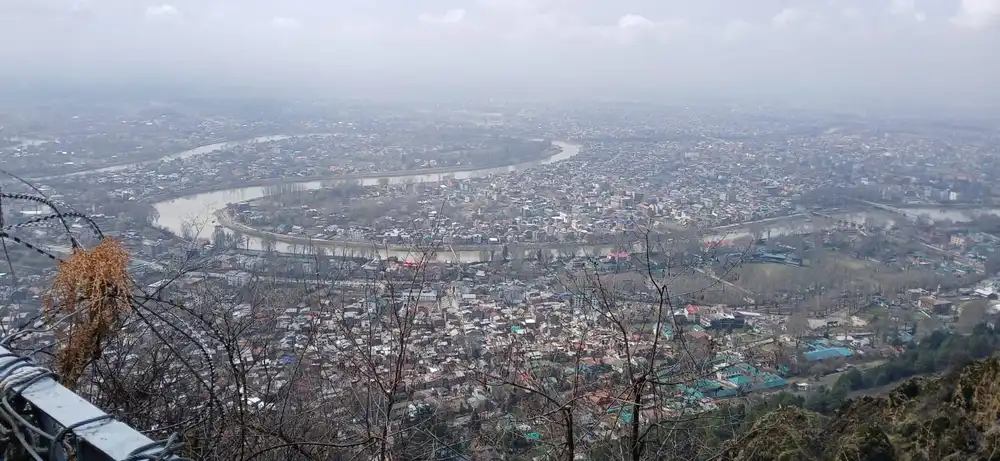
Kashmir serves as proof of nature’s artistic brilliance. Photographers find an endless canvas of possibilities here throughout the year. The paradise transforms with distinct colors each season – spring brings cherry blossoms, summer creates emerald meadows, autumn paints golden chinars, and winter blankets everything in pristine snow.
Photography in Kashmir rewards you with amazing opportunities. You can capture the floating gardens of Dal Lake or document the stark beauty of Ladakh’s mountains. The untouched landscapes of Dooshpatri, Beetab Valley, and Baisaran Valley offer chances to shoot away from tourist crowds.
Great photography in Kashmir depends on timing and patience. Shoots in the early morning produce the best results. Planning your visit during shoulder seasons helps you avoid crowds. Local festivals add cultural depth to your portfolio that blends perfectly with the region’s breathtaking natural backdrops.
Kashmir enchants photographers with its ever-changing scenes and timeless beauty. Your camera and this knowledge will help you understand why Kashmir truly deserves its title as heaven on earth, one frame at a time.
Read More: Pushkar & Ajmer: A Perfect Blend of Spirituality and Heritage
